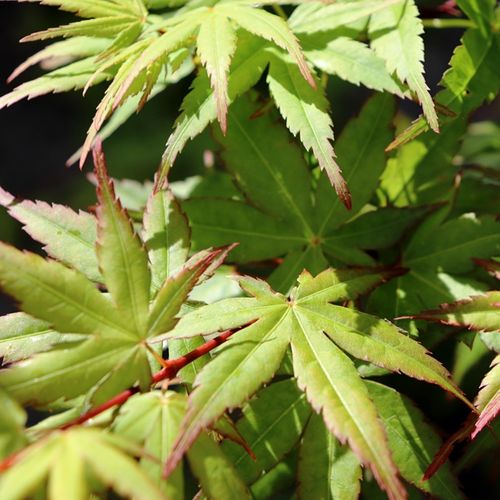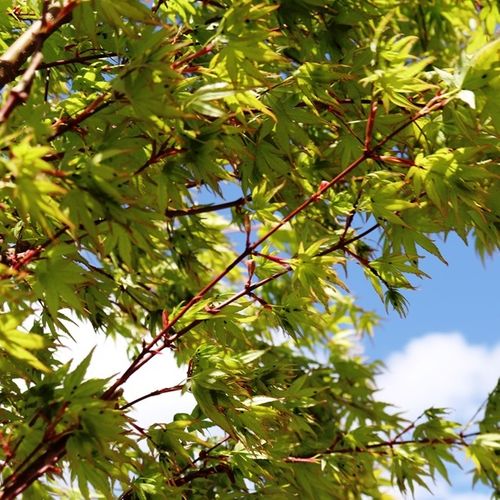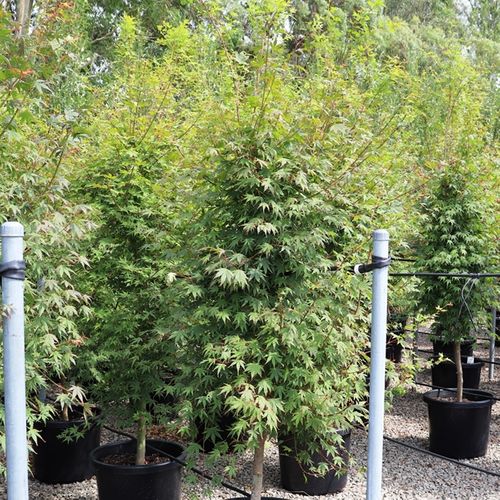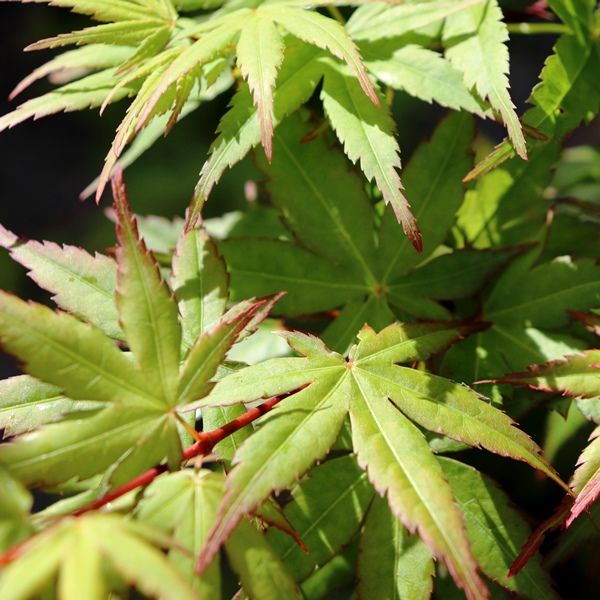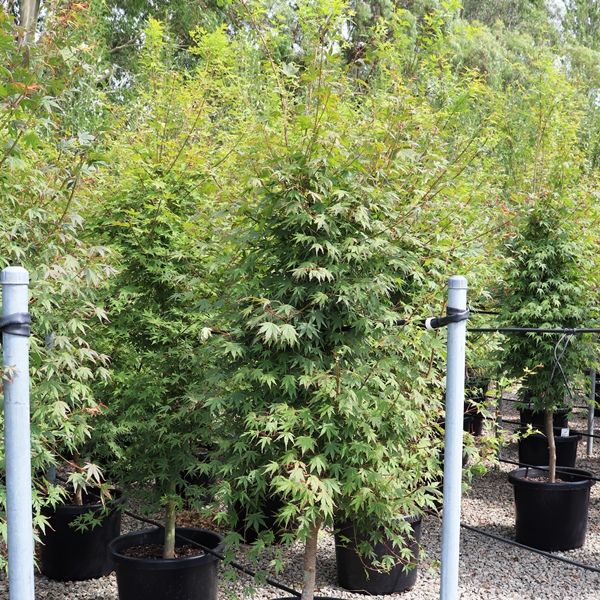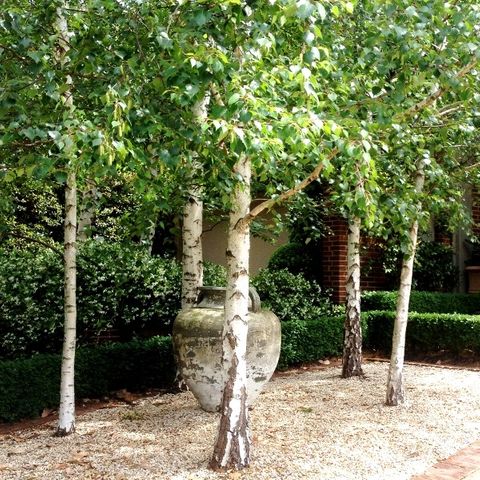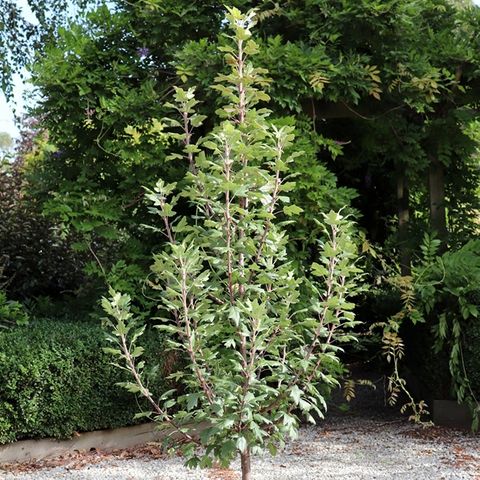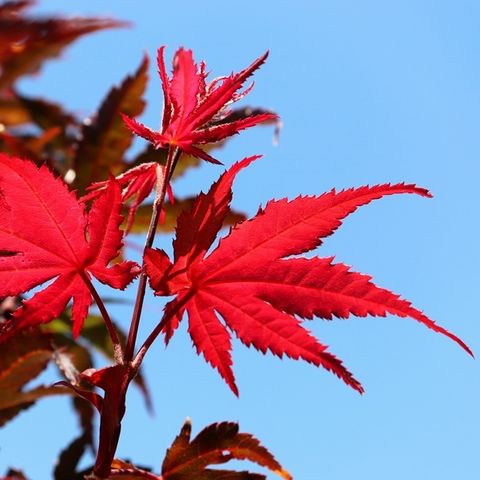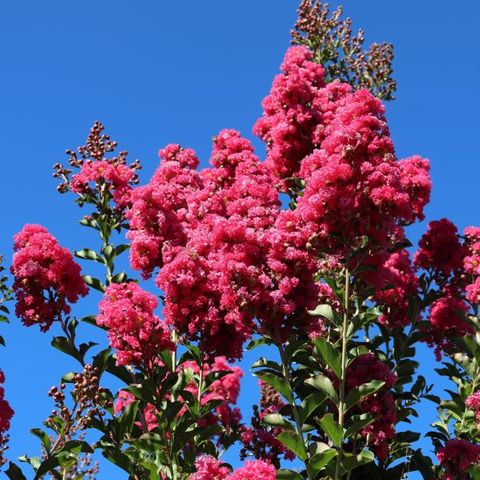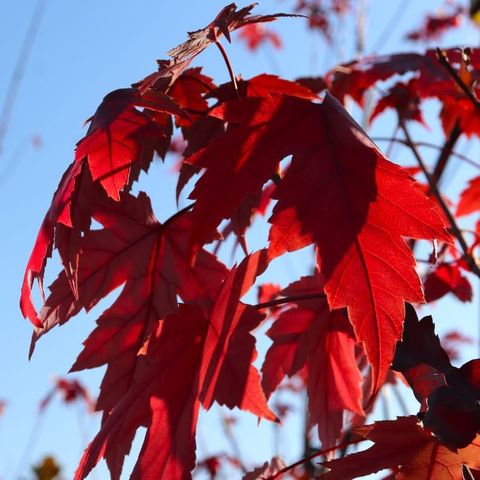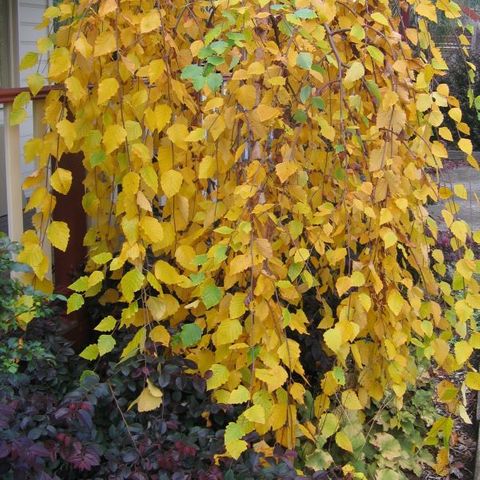Acer palmatum
Acer palmatum, commonly known as Japanese Maple, is a small deciduous tree renowned for its graceful habit and stunning foliage. Its fine-textured, palmate leaves change throughout the seasons from shades of green in summer to vibrant reds, oranges, and purples in autumn, finally dropping in winter. As the tree ages, the bark often develops interesting patterns, ridges, and furrows, adding visual interest to the tree's appearance.
Cultural
Japanese Maples thrive in partial shade to full sun, though they often prefer dappled shade, especially in hotter climates. Protection from harsh afternoon sun is recommended to prevent leaf scorch. They prefer slightly moist, fertile soil but can tolerate a range of soil types. Prune in late winter or early spring to remove dead or diseased branches, shape the tree, and improve air circulation. Avoid heavy pruning, especially on mature trees, as this can lead to stress and loss of form. They may occasionally be affected by aphids, scale insects, or fungal diseases such as powdery mildew.
Landscape Uses
Japanese Maples make stunning focal points due to their elegant form, vibrant foliage, and attractive bark. Planting them as a specimen tree allows their beauty to be showcased. They will add colour, texture, and structure to mixed borders, complementing a wide variety of companion plants such as Pieris, Azaleas, and Hosta. They work well planted in containers.
Dimensions
Height 2.0m to 8.0m
Width 1.0m to 4.0m
Dimensions can vary based on factors such as growing conditions, pruning, and the age of the plant.
Width 1.0m to 4.0m
Dimensions can vary based on factors such as growing conditions, pruning, and the age of the plant.

